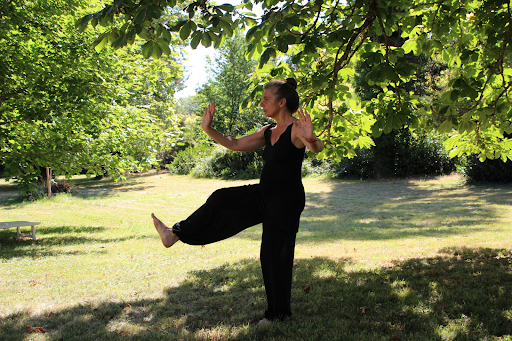Exercise can be an amazing way to diminish stress and get your blood flowing for the day. However, what do you do when you have GI issues on top of that stress — issues that can be worsened by physical activity? Although it can be delicate to find the right mode of exercise to support you when you have irritable bowel syndrome (IBS) or inflammatory bowel disease (IBD), movement is vital. It can help you manage symptoms and diffuse anxiety related to your health. Read on for some tips to help you manage both stress and IBD or IBS symptoms at once by finding the right exercises for you.
What are the benefits of exercise for those with IBS & IBD?
Many people with irritable bowel syndrome (IBS) and inflammatory bowel disease (IBD) suffer from anxiety. It can be a chicken or egg situation, where anxiety causes symptoms and symptoms cause anxiety. Exercising can be a great way to diffuse stress and mitigate the symptoms exacerbated by it, like bloating, gas, and constipation. Along with aiding anxiety, exercise also helps you sleep better. Getting proper rest, while also important to eliminating anxiety, provides a time for your body to heal itself. When you are sleep-deprived, your body diverts blood and nutrients away from your gut, causing the GI tract to slow down which can result in constipation. Also alleviated by exercise, constipation is a major issue for IBS-C sufferers. Movement can stimulate your breathing and heart rate which causes the muscles in your gastrointestinal tract to contract more easily, stimulating regular bowel movements (1).
Not only does stress feel bad, but it can cause inflammation, a major issue for people with disorders of the gut. Some research suggests that regular exercise may help people reduce inflammation and avoid flare-ups, particularly Crohn’s patients. Whether this is because Crohn’s patients who exercise more have fewer symptoms, which in turn allows them to exercise more, or if the movement itself reduces symptoms has not been conclusively proven (2).
Exercise can also improve bone density issues which can be prevalent amongst IBS and IBD patients due in part to the malabsorption of nutrients like vitamin D and calcium, which bolster bone health. Medicines like steroids can also negatively impact bone health. Cardio and weight training are great for bone-building due to the resistance that is put on bones during these exercises. This forces the bones to strengthen in order to compensate, resulting in a boost to bone density over time (2).
What exercise should I limit if I’m worried about my IBD or IBS symptoms?
Despite all of the great reasons to exercise for IBS or IBD patients, some exercises can aggravate uncomfortable symptoms by putting pressure on the GI tract while using the abdominal muscles. Exercises that cause a lot of strain in the midsection can stimulate bowel movements, cause you to cramp, and bring on bouts of diarrhea (3). Exercises that jar the body and push you to your physical limits with intense periods of movement can also be tough to manage, particularly for IBD and IBS-D patients (4).
High-intensity interval training (HIIT) workouts, like CrossFit, can be particularly tough on GI symptoms. They can encourage cortisol, a stress hormone, to be released which can cause diarrhea (1). Intense running can be equally hard on the body as you pound the pavement or a track. This is also true of ball sports, like volleyball, football or soccer. The jumping, sprinting, and catching can be intense, particularly if you catch a strong throw, fall, or get tackled by a teammate. Undoubtedly, the most difficult activity to manage for IBS and IBD patients is endurance training, which pushes you to your limits. There are marathon runners and triathletes who do have a GI disorder and learn to navigate these activities safely, but it does require careful consideration. It’s likewise possible to incorporate running, ball sports, or other forms of intense exercise into your routine if you’re able to be aware of your IBS symptoms and manage them when they come on. The important thing is to avoid pushing yourself too far (4).
The best exercises when living with IBD, IBS and other chronic GI conditions

Exercises that work well for irritable bowel syndrome (IBS) and inflammatory bowel disease (IBD) patients are typically lower impact, with calmer or lower pressure movements. Swimming can be an excellent low-impact choice that avoids any jarring movements that could cause you problems. Although your body is supported by water, and swimming is easier on your gut, it still burns plenty of calories and can allow your muscles to stretch while getting a comprehensive workout. Biking is another way to get great benefits while taking some of the pressure off of your abdominal muscles. You’re supported by the bike, which takes a bit of pressure off, and focuses on your lower body. It’s best to keep it at a low level on a stationary bike or stick to smooth roads if outside, to keep it relatively low impact (4).
Calming exercises that focus on mindfulness like yoga, pilates, and tai-chi are excellent choices for managing IBD and IBS symptoms. The stress diffusing benefits of exercises like yoga are huge, as these exercises typically encourage deep breaths, methodical movements, and have an overall meditative approach to physical activity that focuses on the mind as well as the body. In addition, many poses can specifically aid digestion and bloating. You can find more information about yoga for digestion here (1).
Don’t overlook the power of a simple walk. Getting outside, in a natural environment with sunlight and fresh air can do wonders for decreasing symptom-causing stress. This can even be combined with some light meditation, whether on your own or using one of your favorite meditation apps. Walking can also decrease your cortisol level and lower the glucose in your bloodstream which aids digestion. Even small breaks throughout the day can help digestion immensely, particularly if you don’t get to move frequently while working. Incorporating movement and small walks into each day is a great symptom diffusing goal (1).
What’s the best way to get started?
It is possible to exercise safely with irritable bowel syndrome (IBS) and inflammatory bowel disease (IBD) while attaining the maximum benefit and minimization of symptoms. All athletes indeed need to stay hydrated while working out, but this is doubly important for IBD patients, who can be prone to dehydration and anemia due to bleeding. If you have bleeding issues or are feeling exhausted, you should give exercise a miss until IBD or IBS symptoms abate, and inform your doctor (3).
To get the best results for your health, it’s always advisable to focus on restorative movements as the core of your routine. For anything more intense, start slowly and work your way up. Instead of powerlifting, start with circuit training, which gives your body a break in between reps, and is lower impact while still increasing your heart rate, or an isometric routine using your body weight for resistance. The same goes for cardio — it’s best to increase your efforts slowly with intervals and work your way up to what your body can handle (2).
Make sure to always speak with your doctor about any exercise-related concerns you may have, in addition to reaching out to other active GI patients to exchange tips and ideas. Many people find eating a low FODMAP diet works well to offset symptoms and eat low FODMAP particularly when exercising more. When introducing exercise into your day, always be flexible with your plan. Carefully consider what activities are appropriate for how you’re feeling, and continually check in with yourself. It’s a good idea to have a plan B in place in case you aren’t up to what you had originally planned. If running or biking feels too intense for your energy level, you may consider switching to yoga or a walk. If you don’t feel good, stop. The most important thing to remember is to always listen to your body (3).
References
-
Hallie Levine, “The 5 Best Exercises for IBS — and 2 to Avoid,” Livestrong, Leaf Group Ltd., April 14, 2020, https://www.livestrong.com/article/13725383-ibs-exercise/.
-
Jamie Friedlander, “Exercise Can Help Those Living with IBD. Here’s How to do it Right.,” Healthline, Healthline Media, revised June 15, 2018, https://www.healthline.com/health/exercise-with-IBD#Best-practices-for-exercising-with-a-gastrointestinal-condition.
-
Laurel Leicht, “7 Tips for Exercise Success with a GI Disorder,” WebMD, WebMD LLC, revised January 21, 2016, https://www.webmd.com/ibd-crohns-disease/ulcerative-colitis/features/exercising-when-you-have-a-gi-disorder.
-
Monica Nelson, “The Worst Workouts To Do If You Have IBS — And 5 You Should Try Instead,” Prevention, Hearst, August 17, 2016, https://www.prevention.com/fitness/g20470182/the-worst-workouts-to-do-if-you-have-ibs-and-5-you-should-try-instead/.


